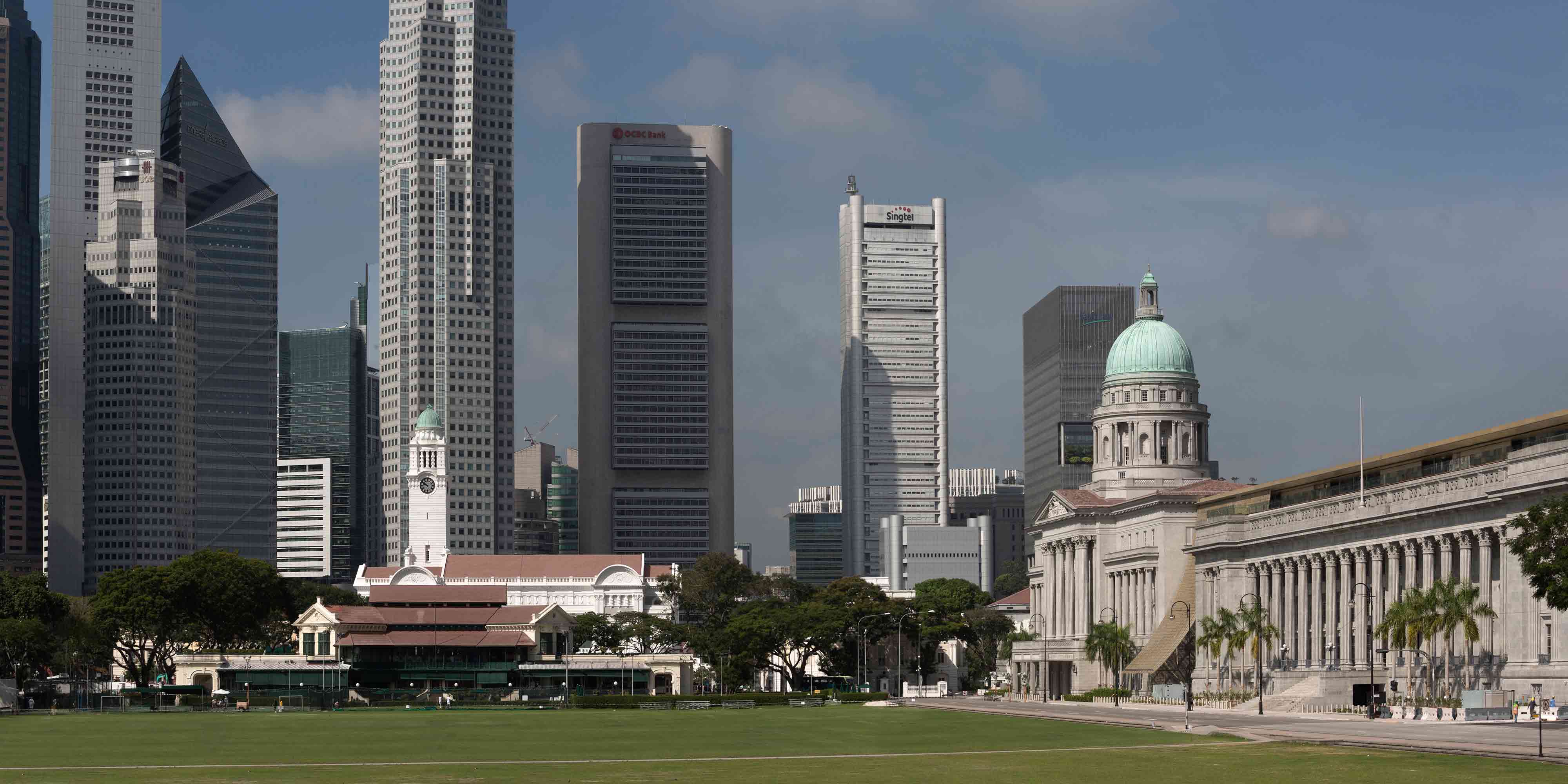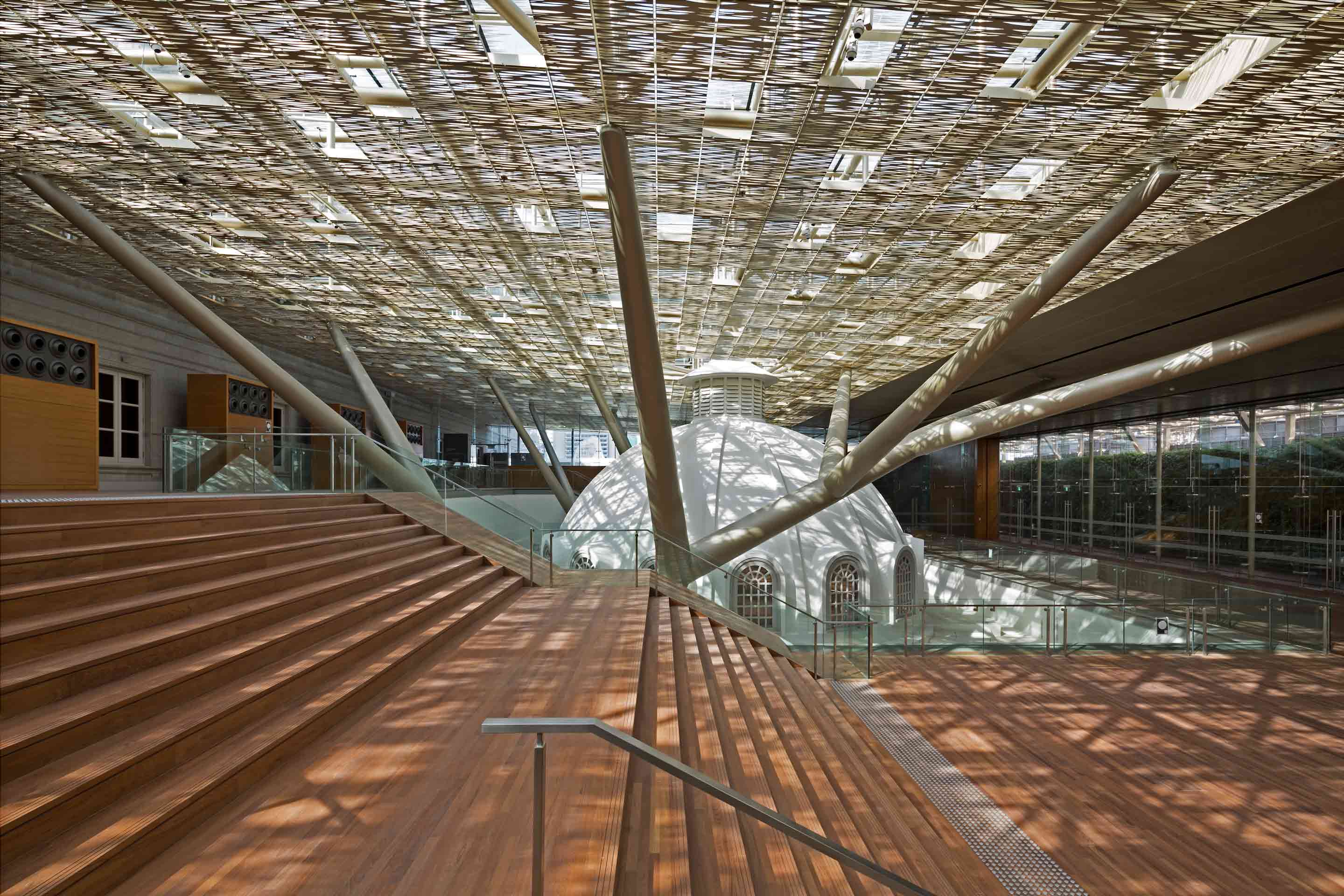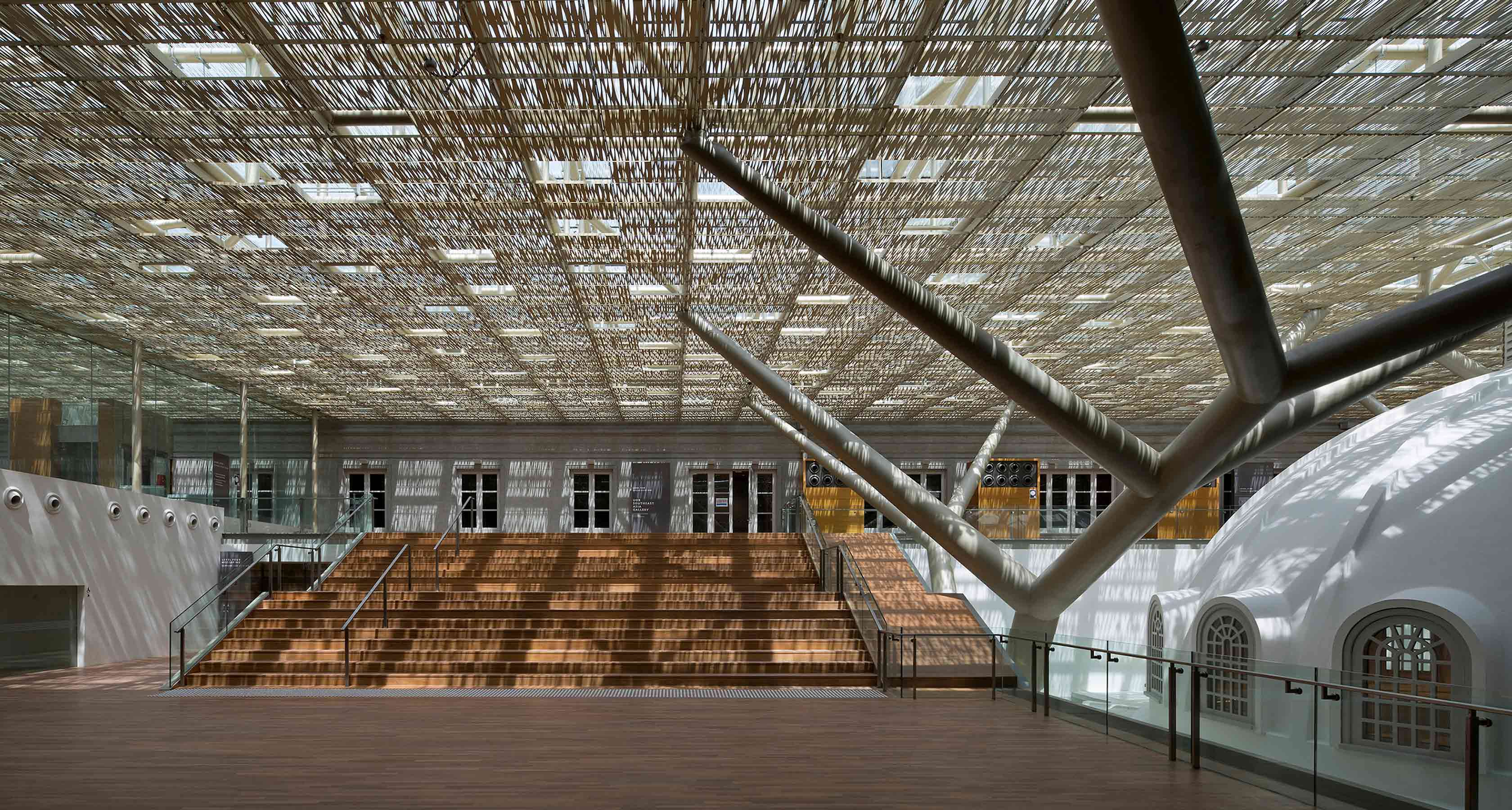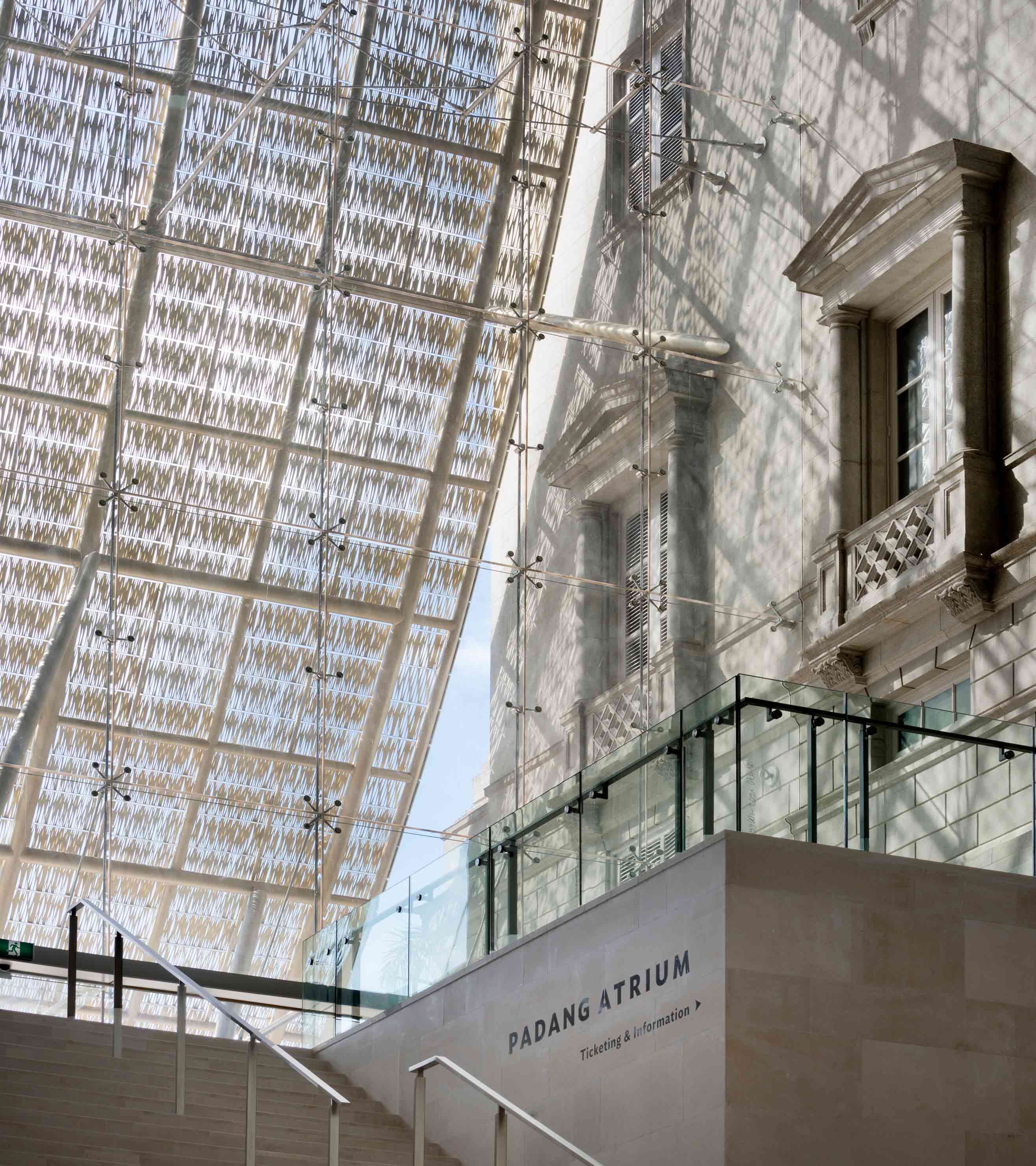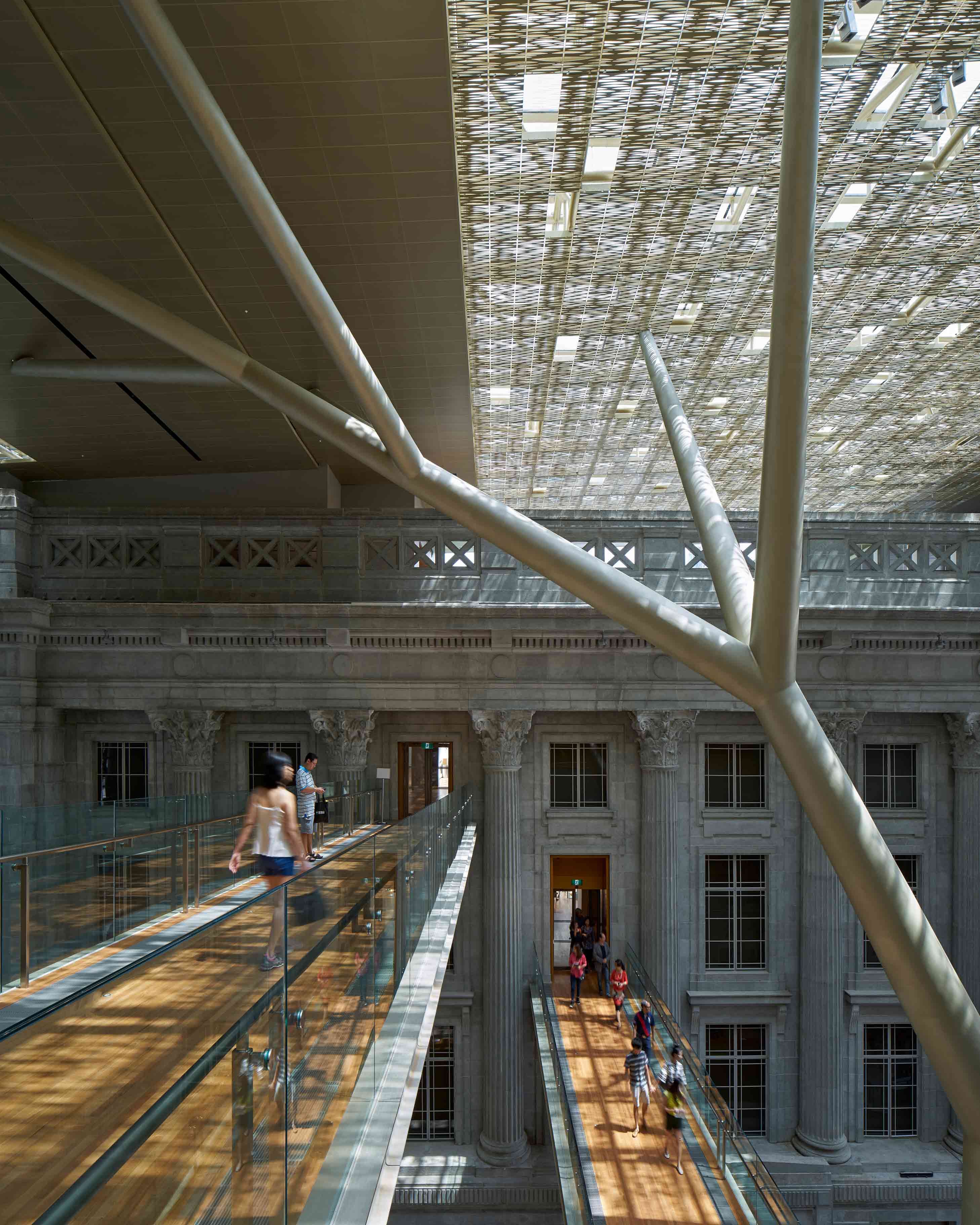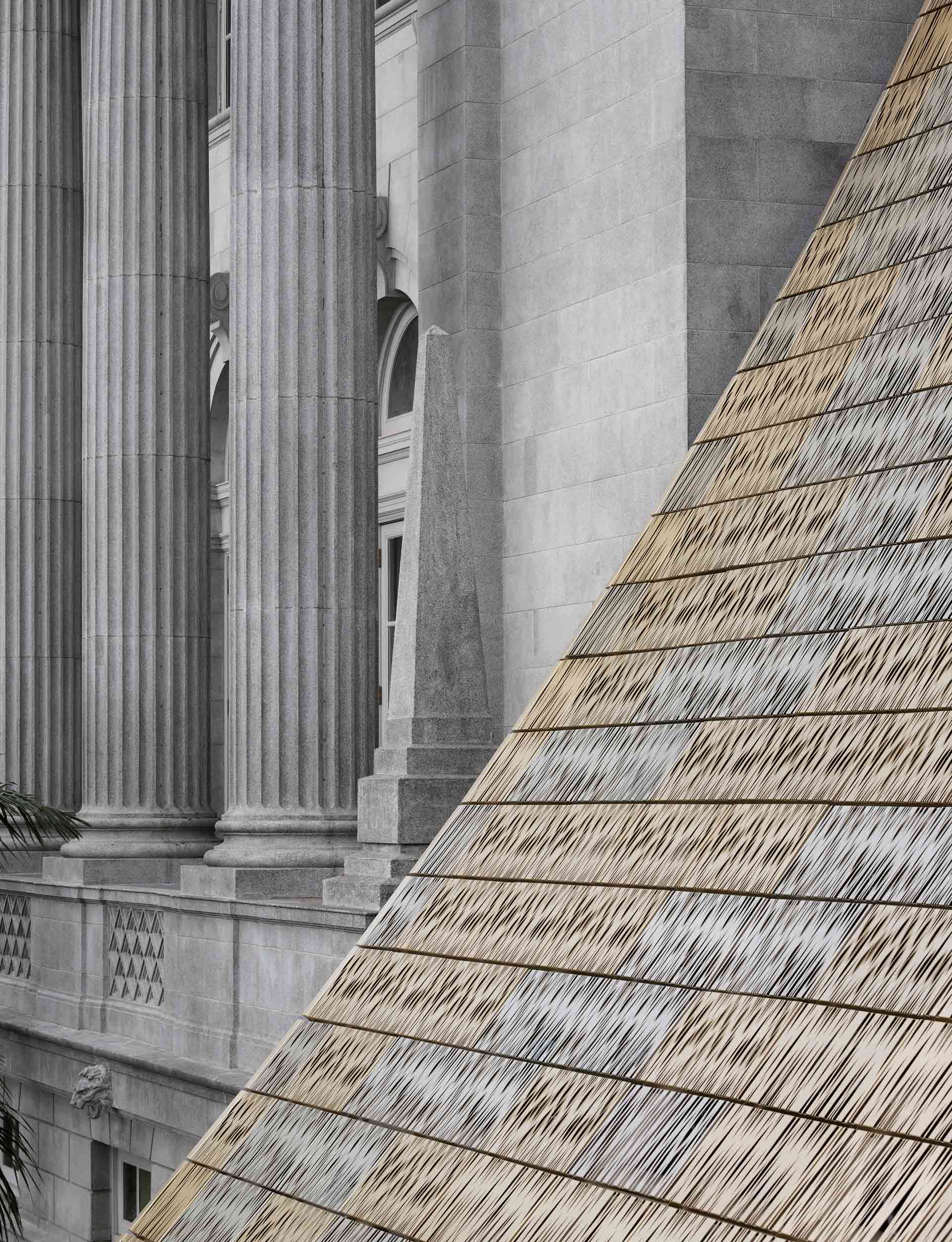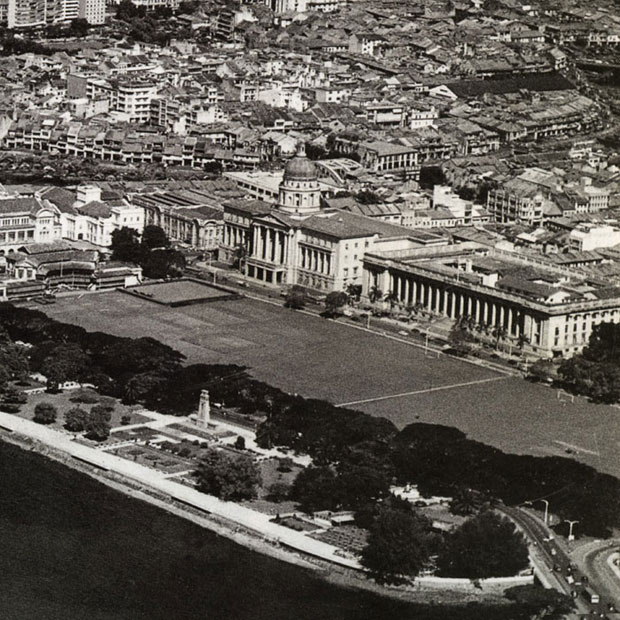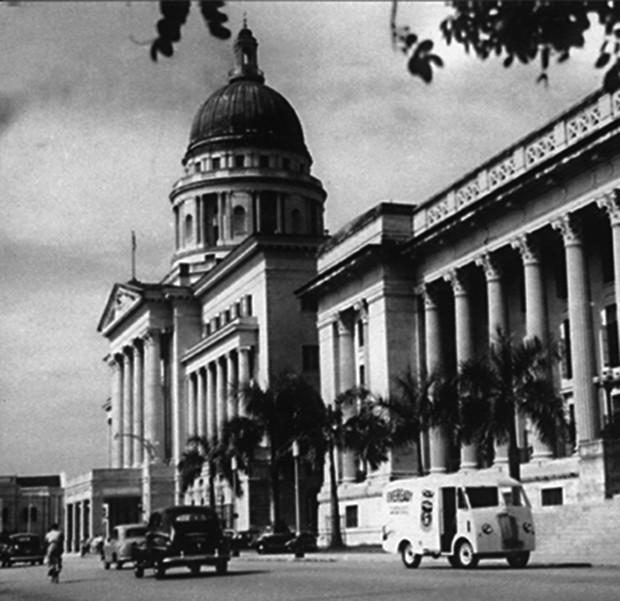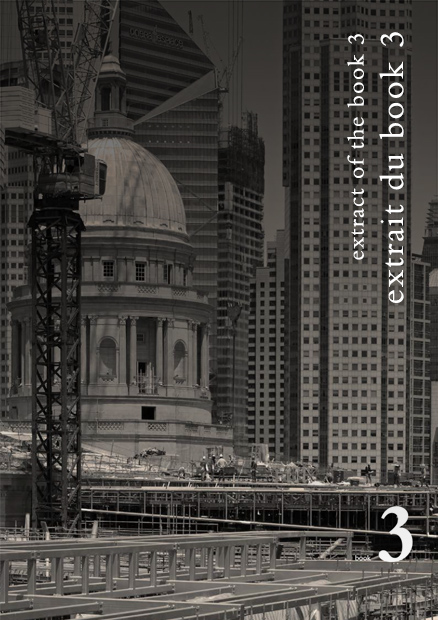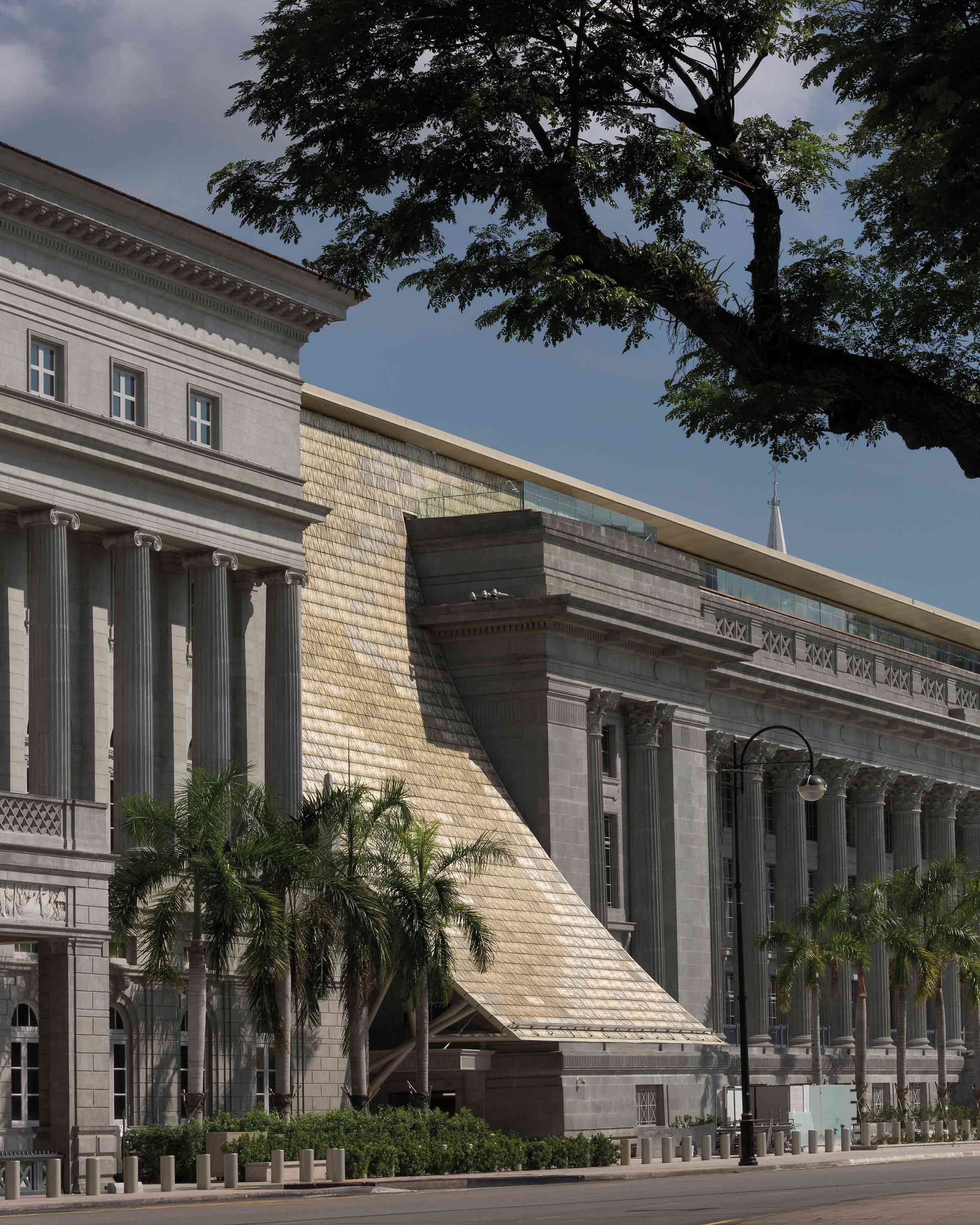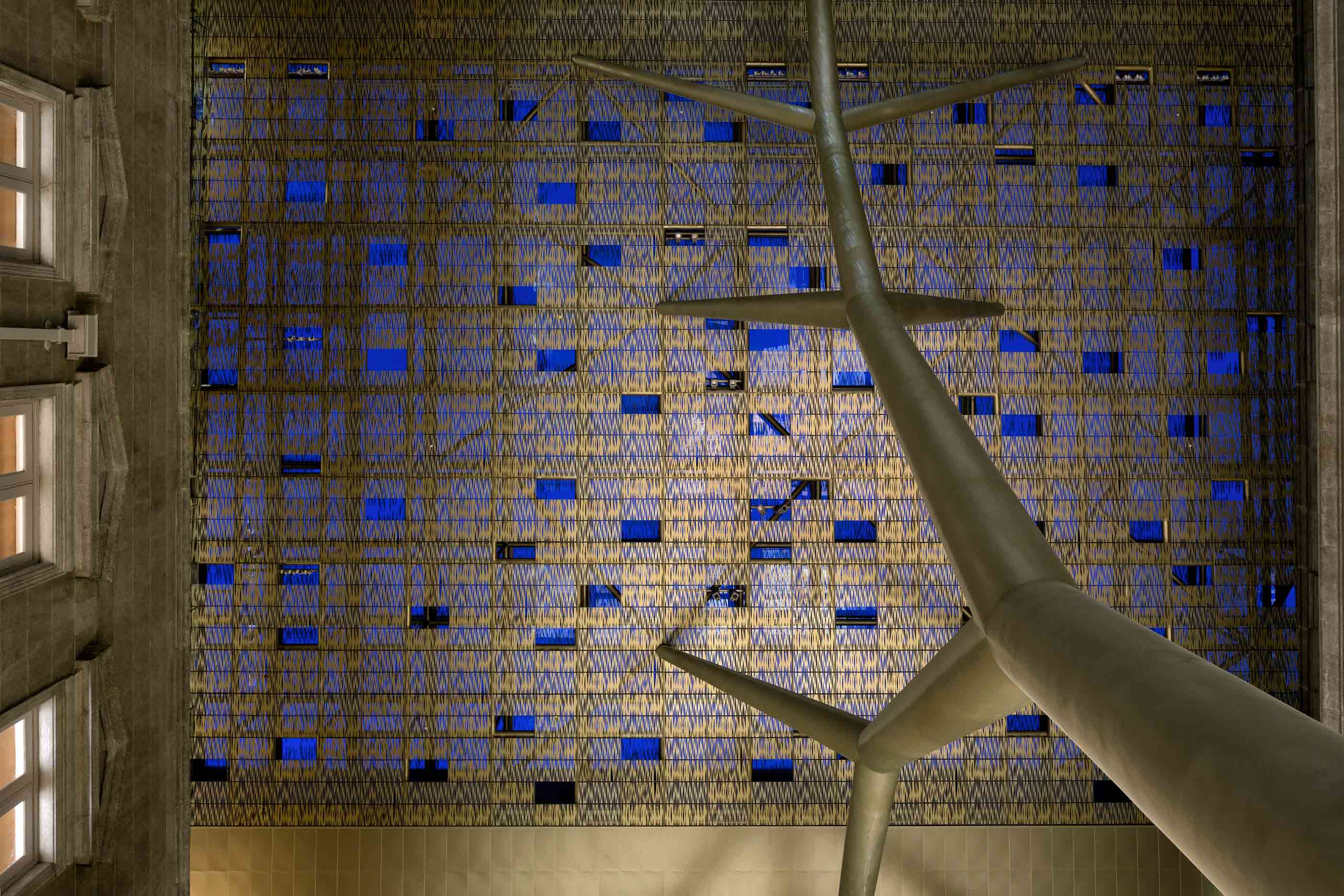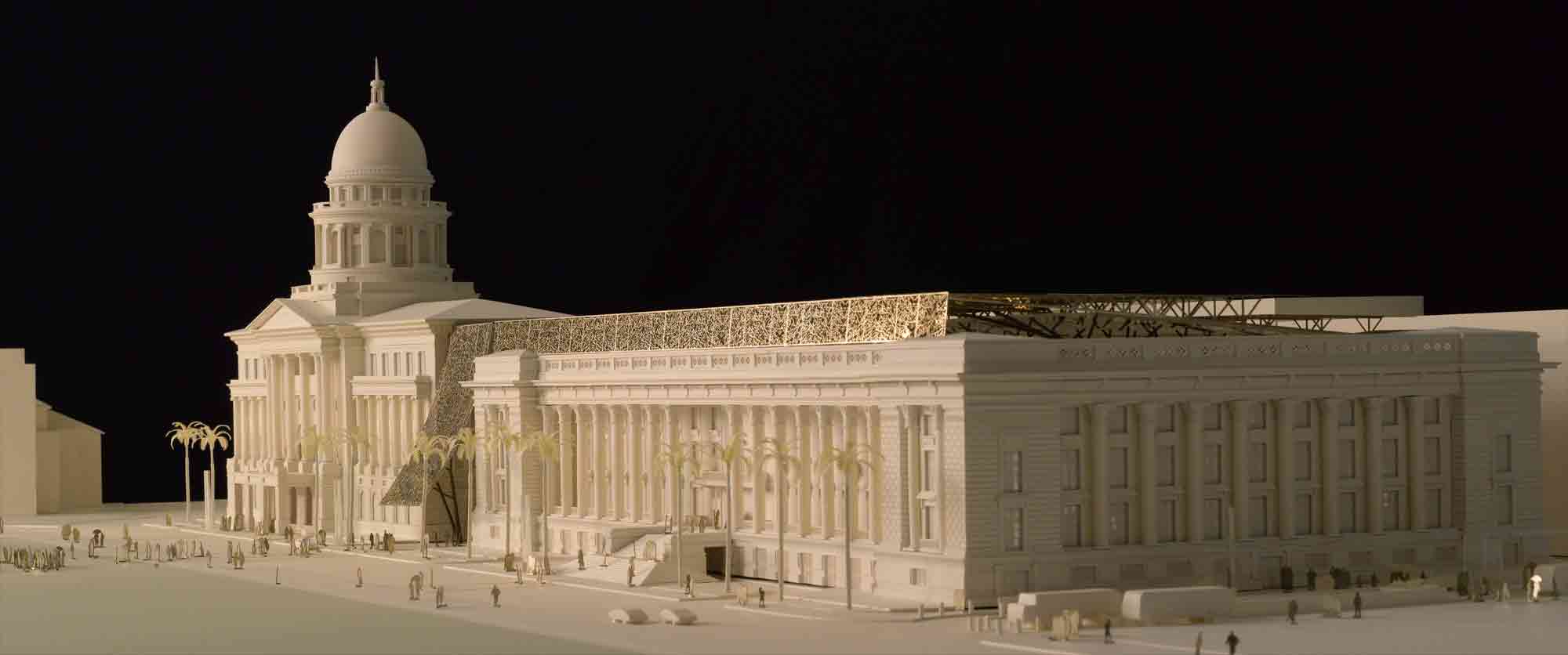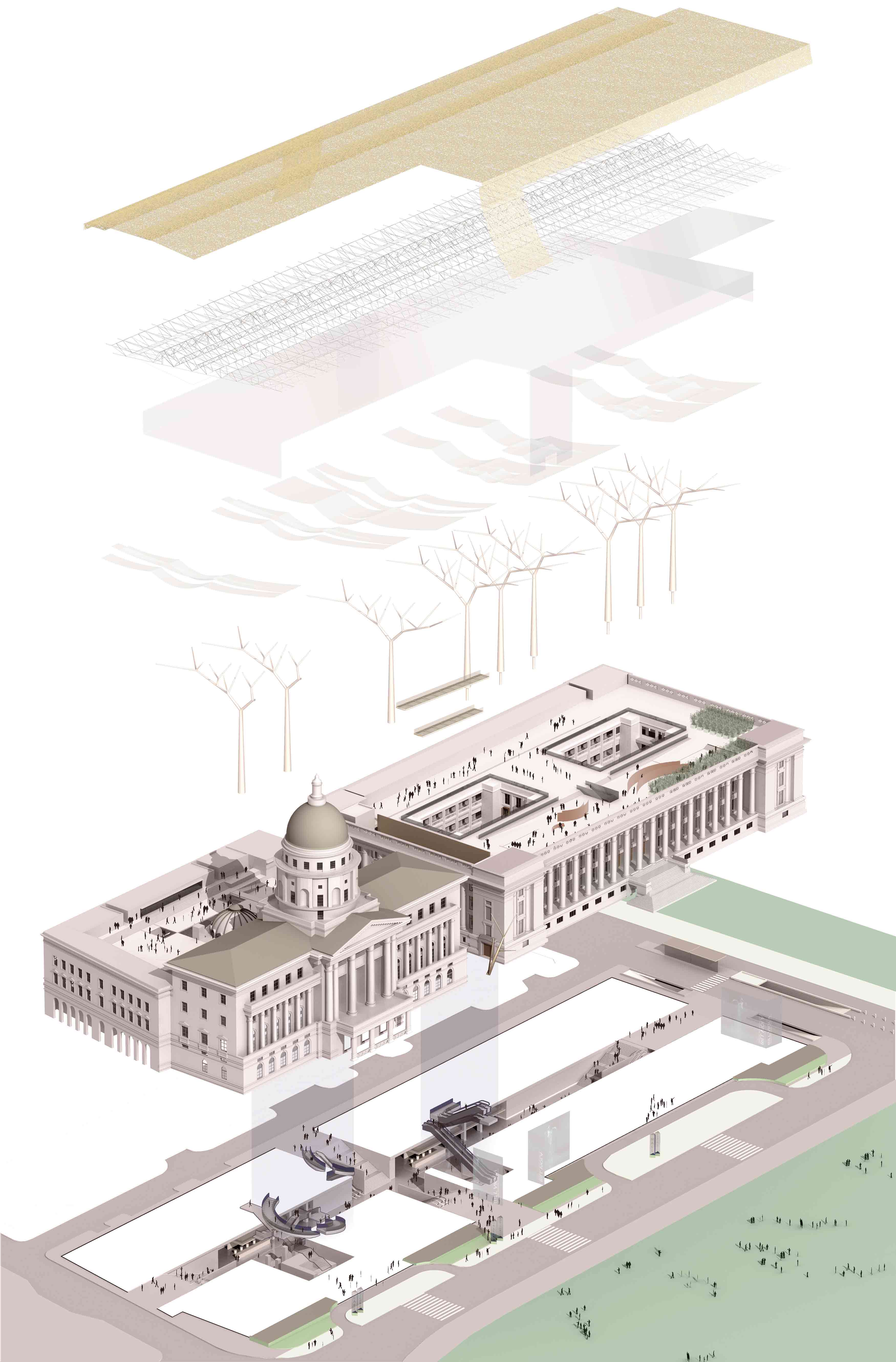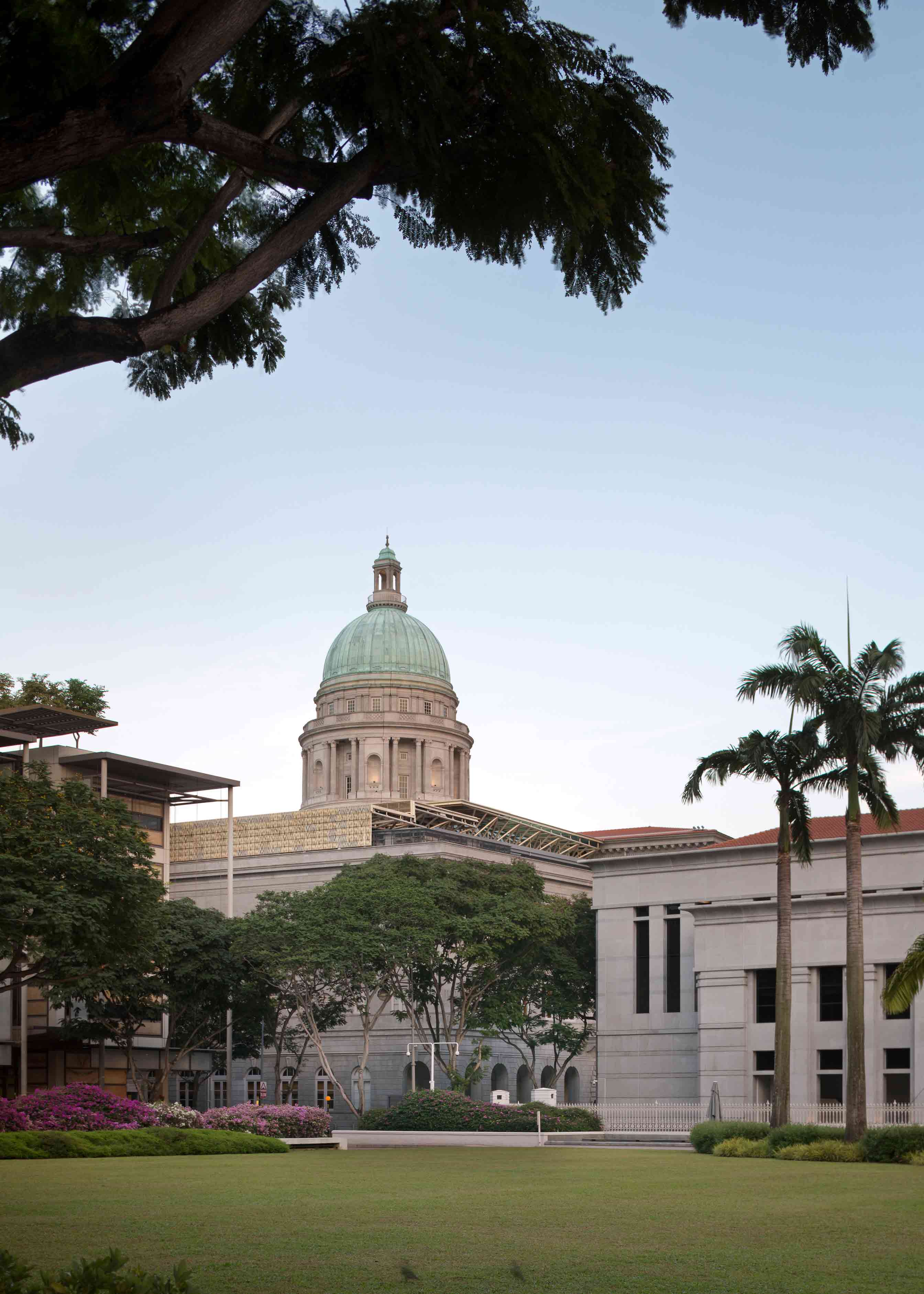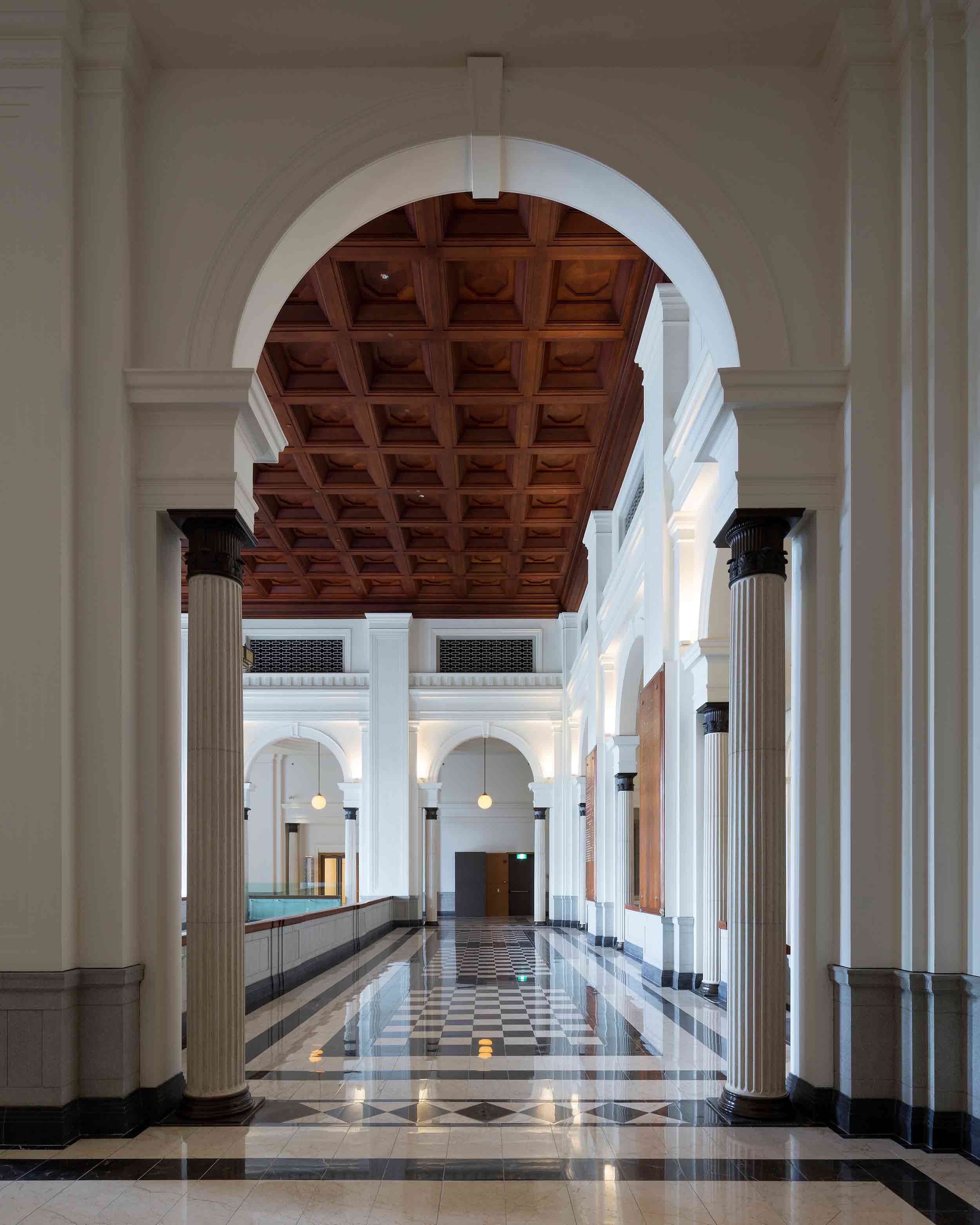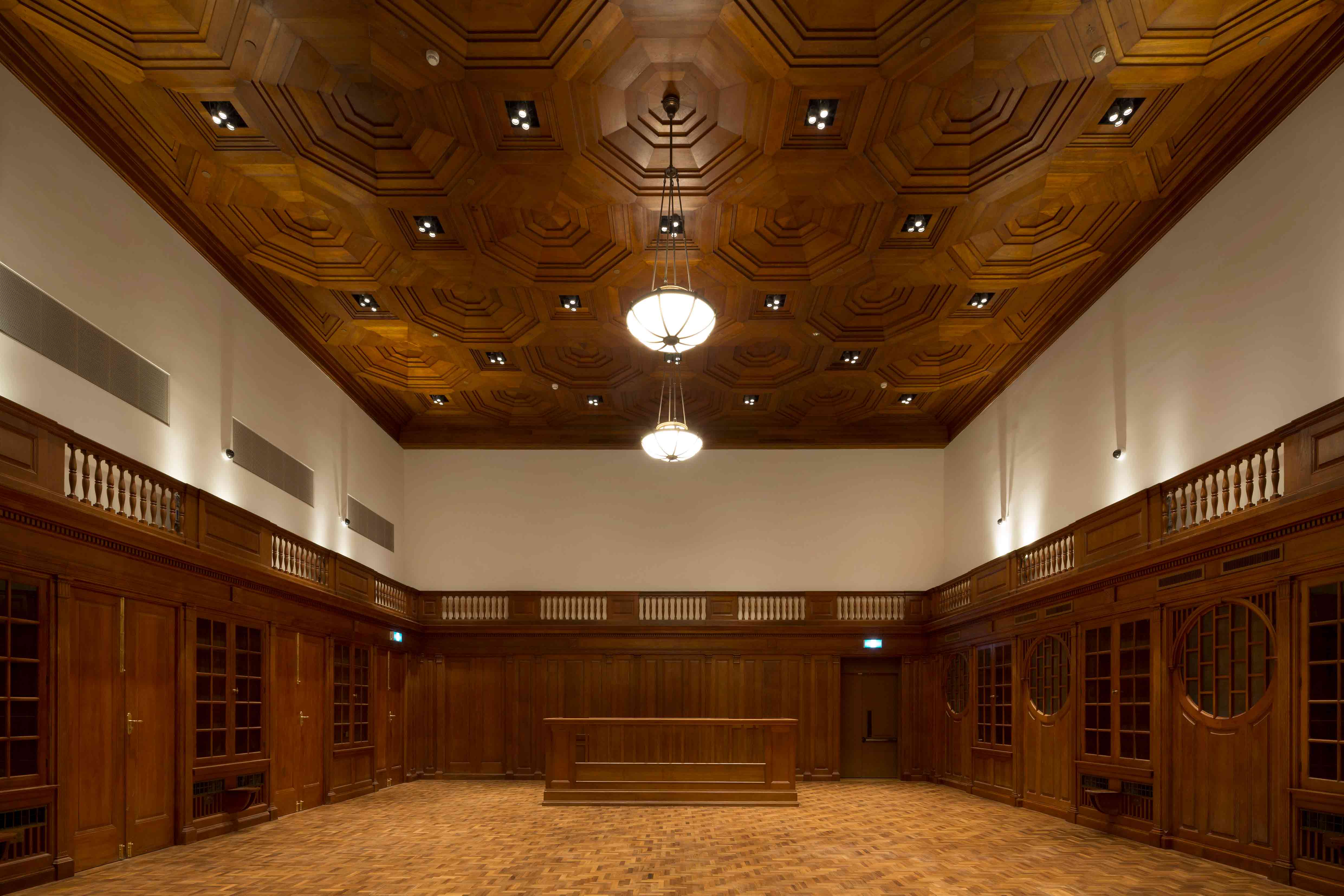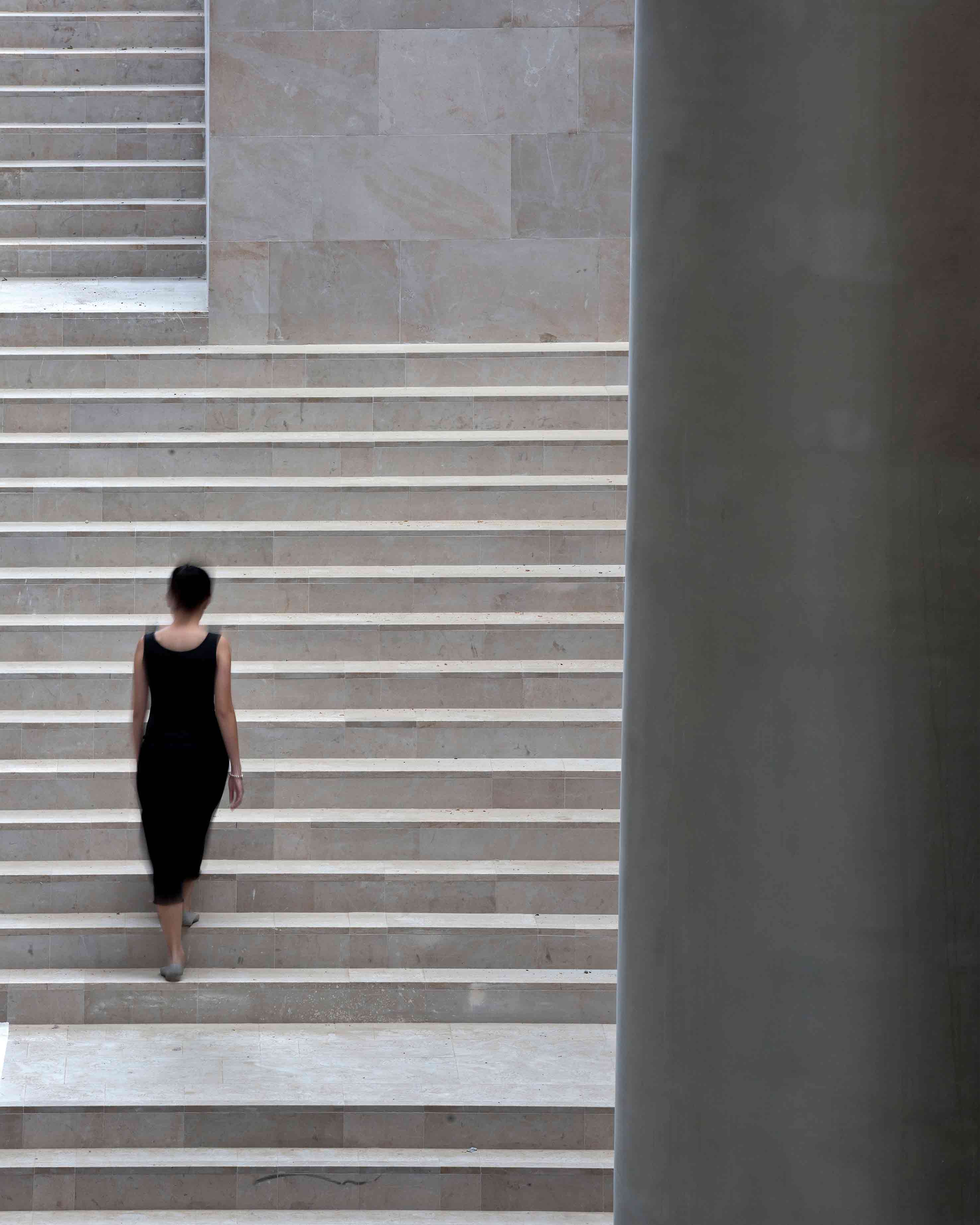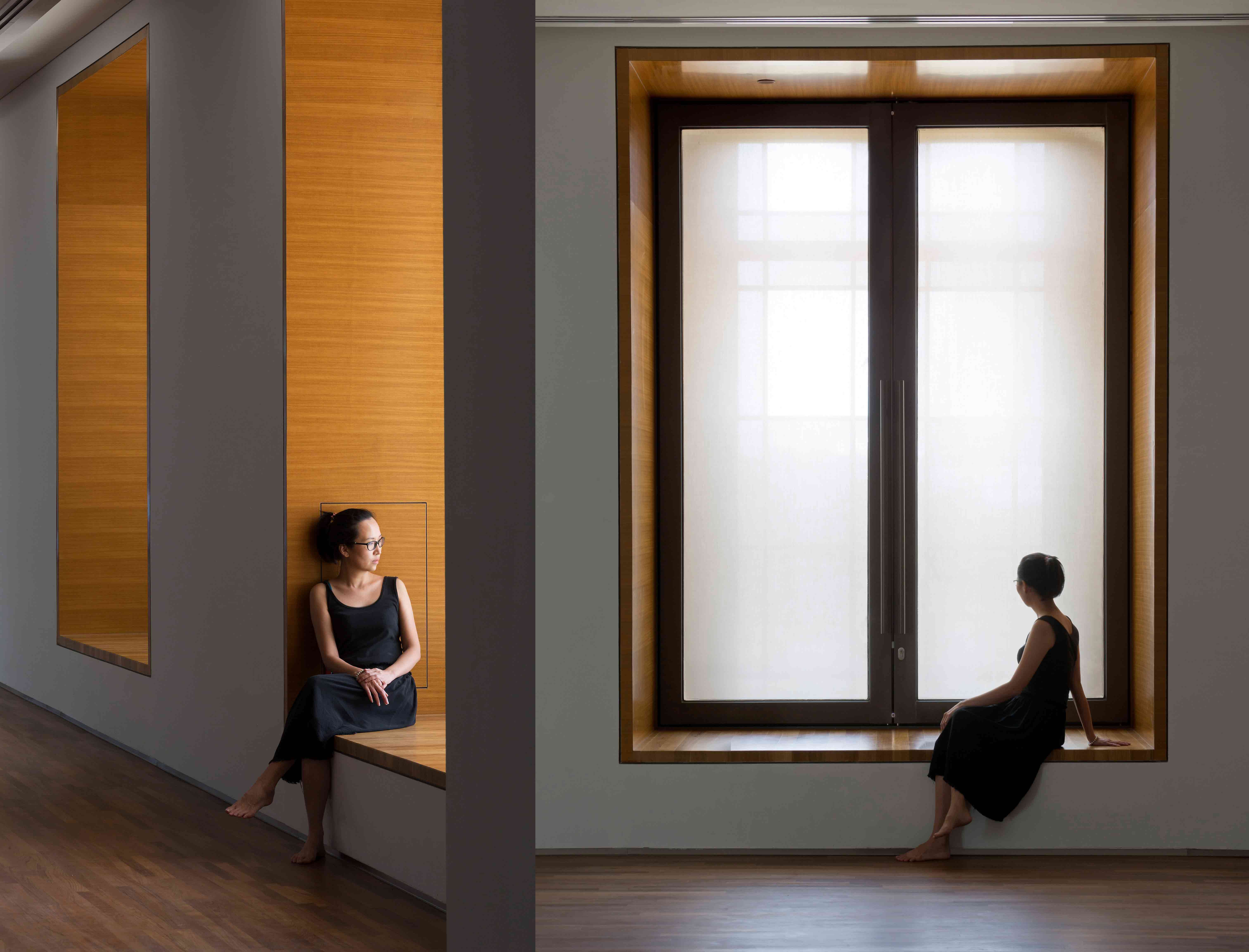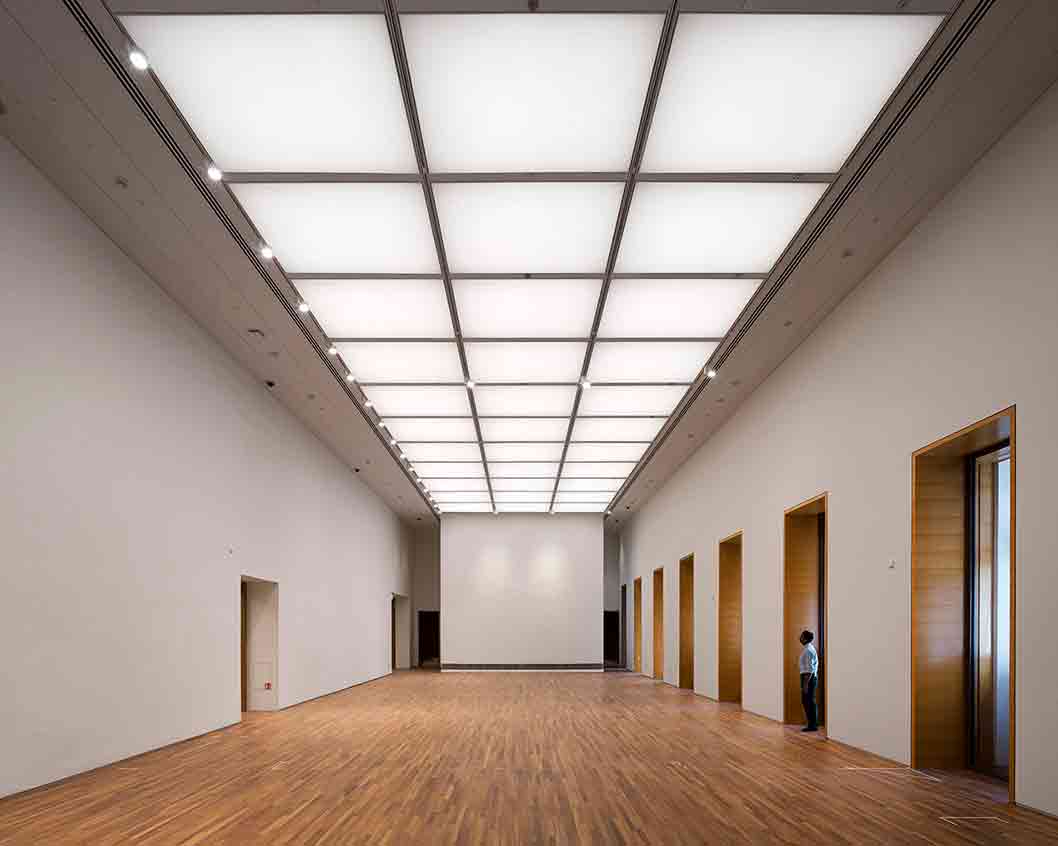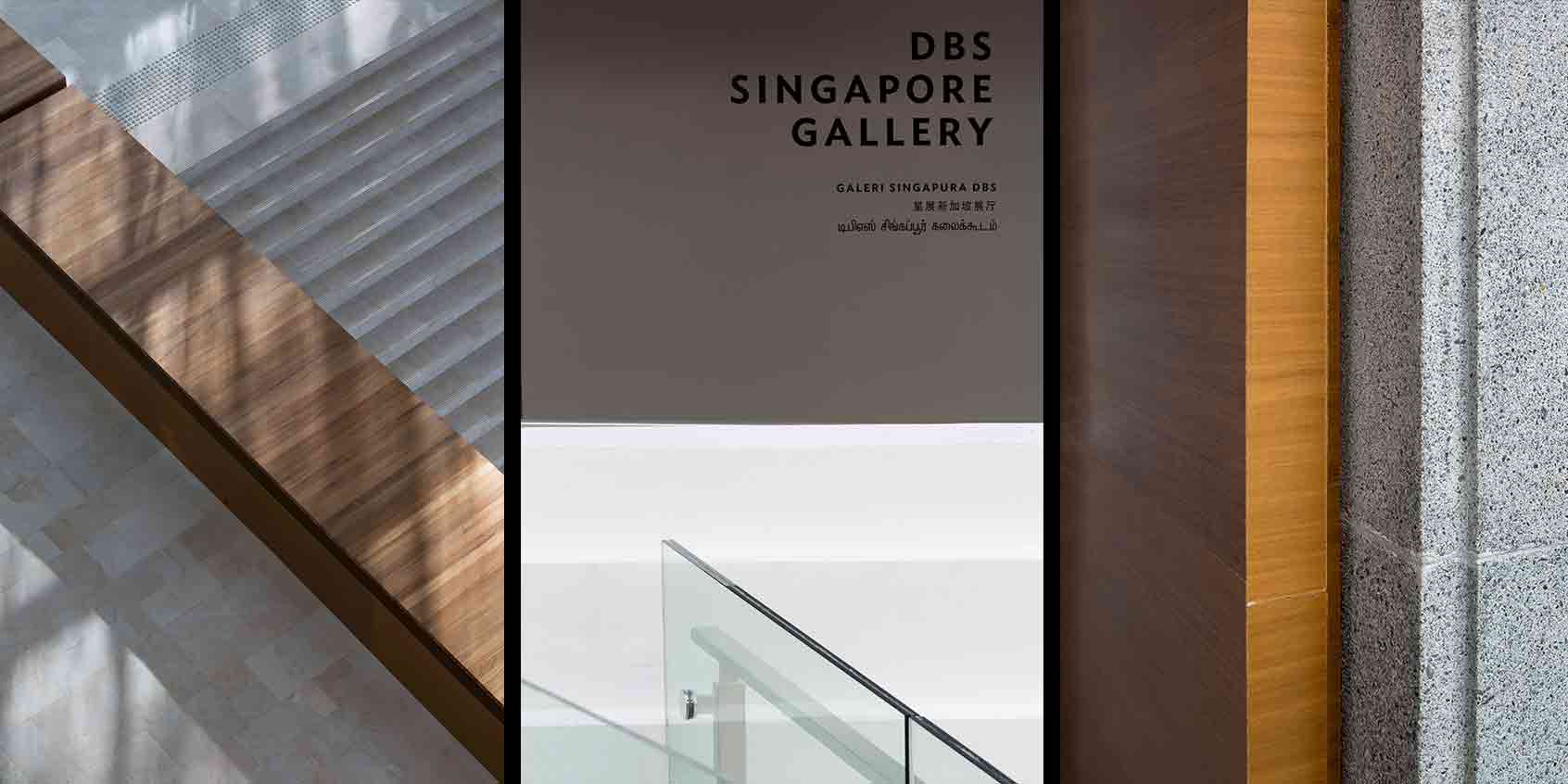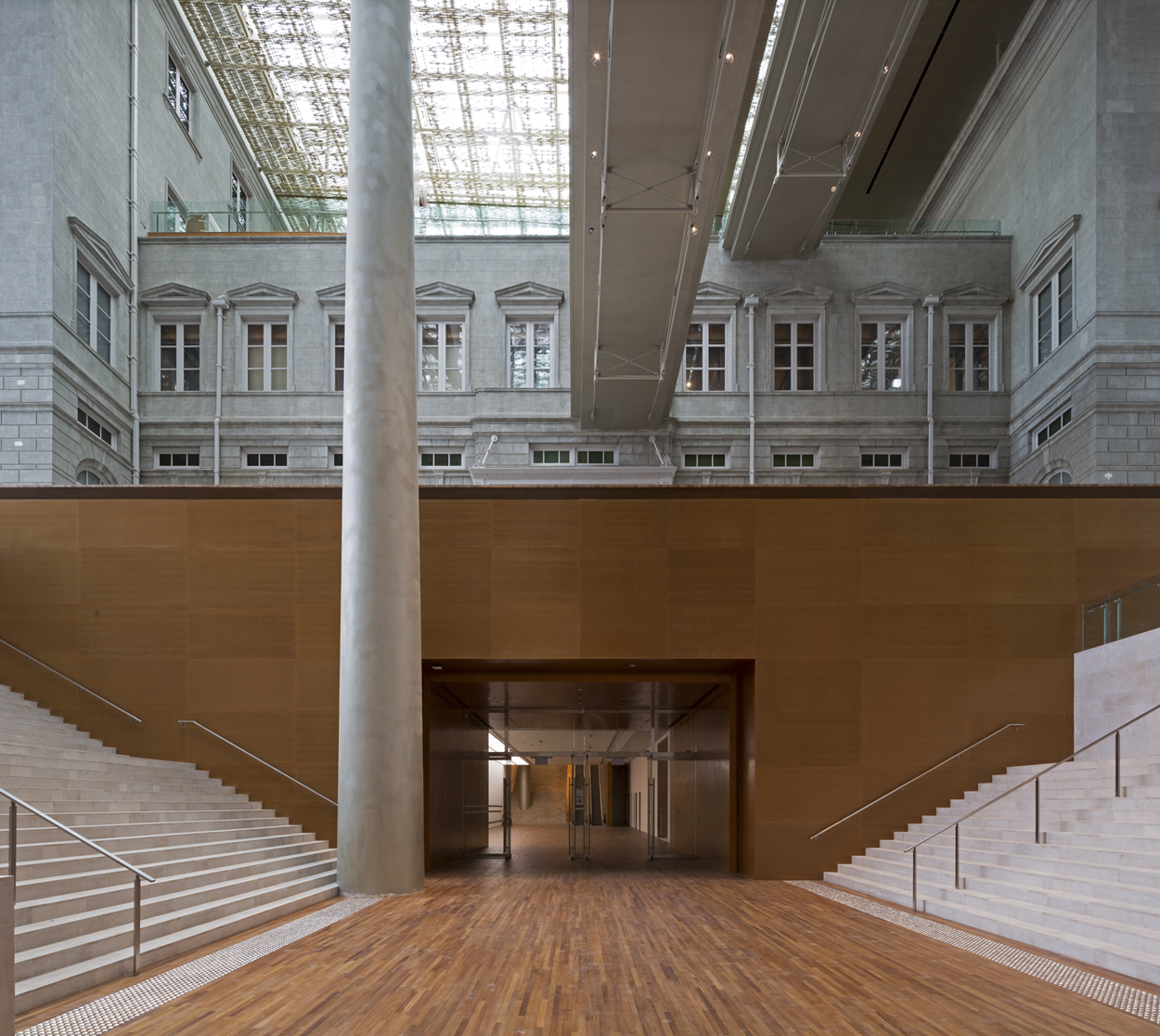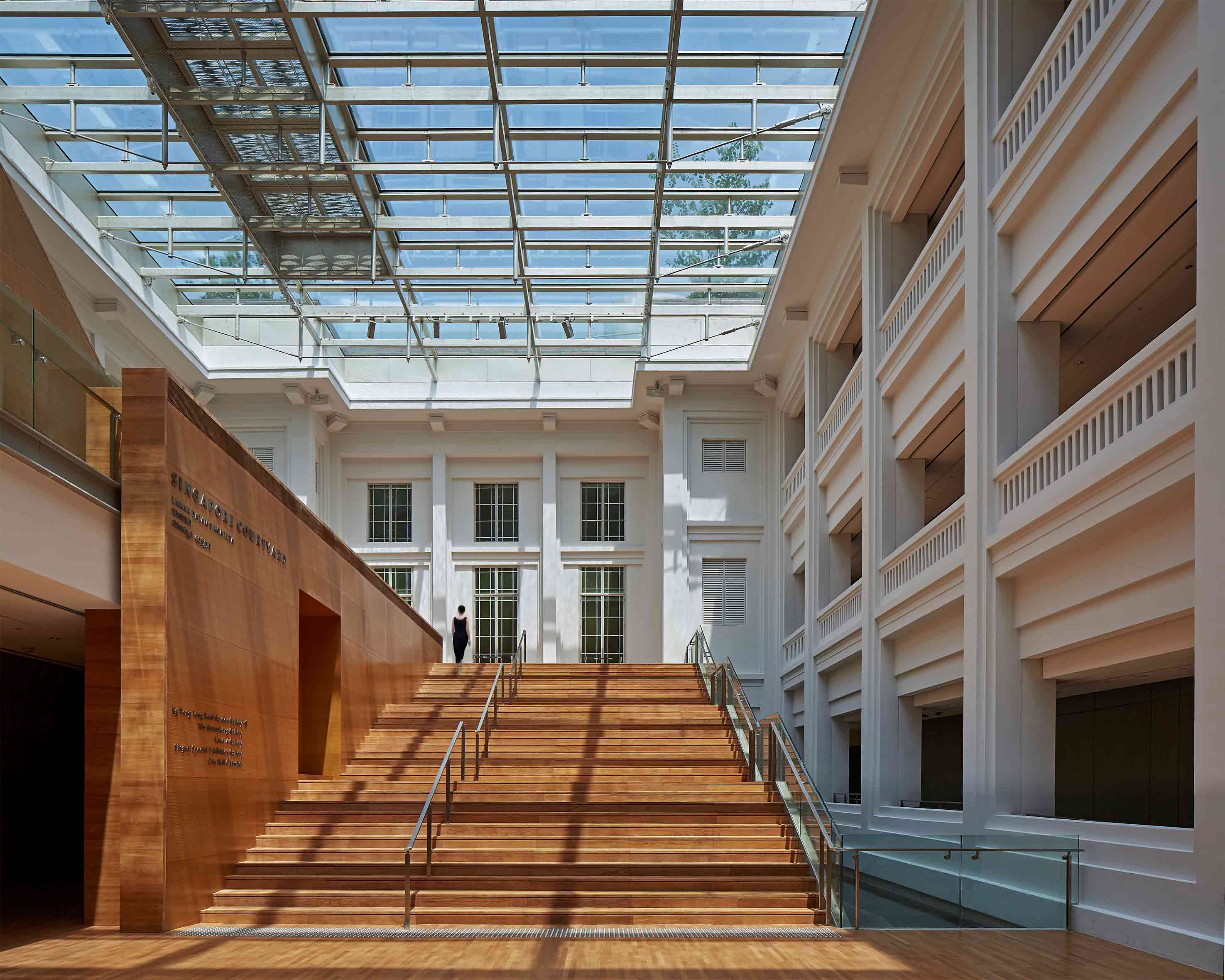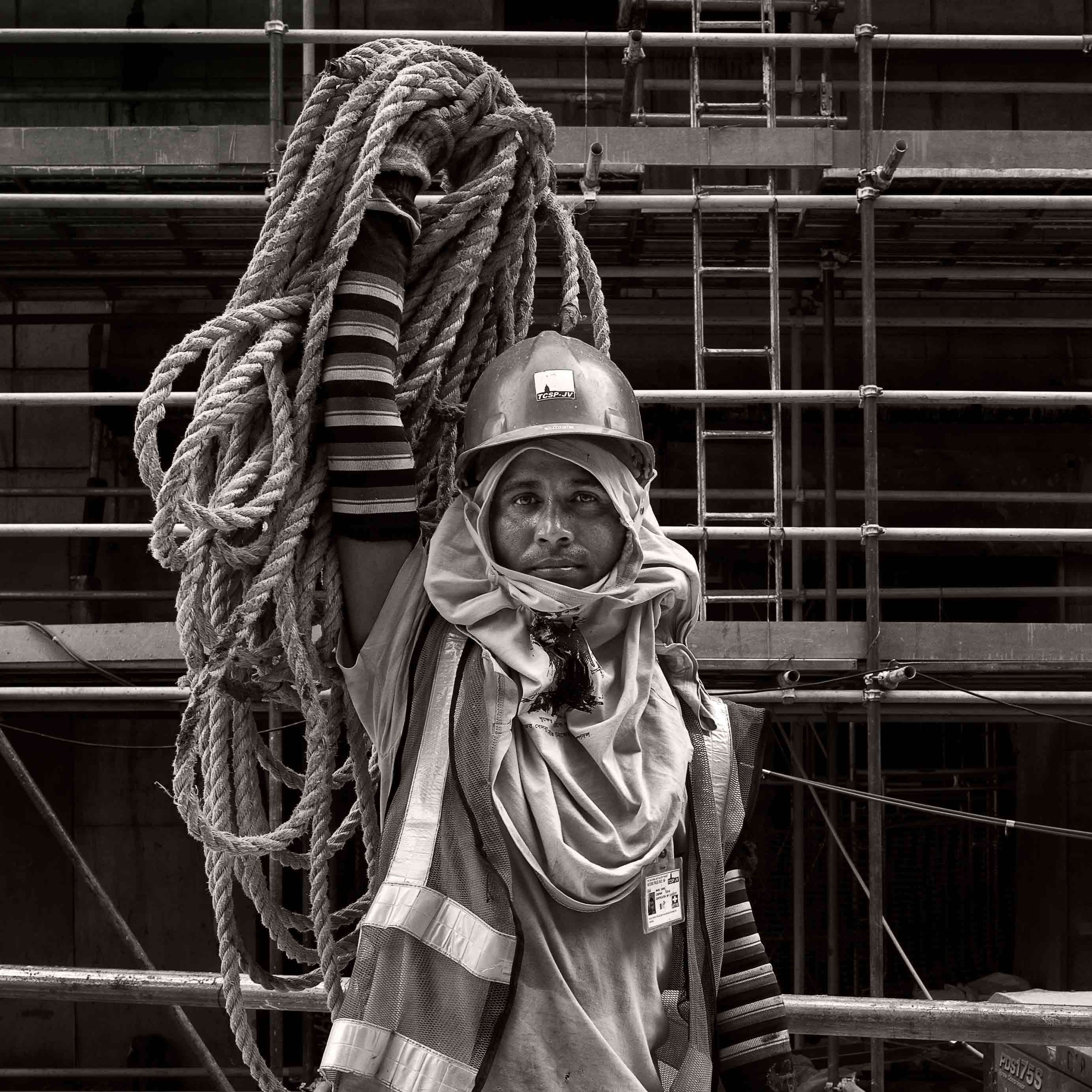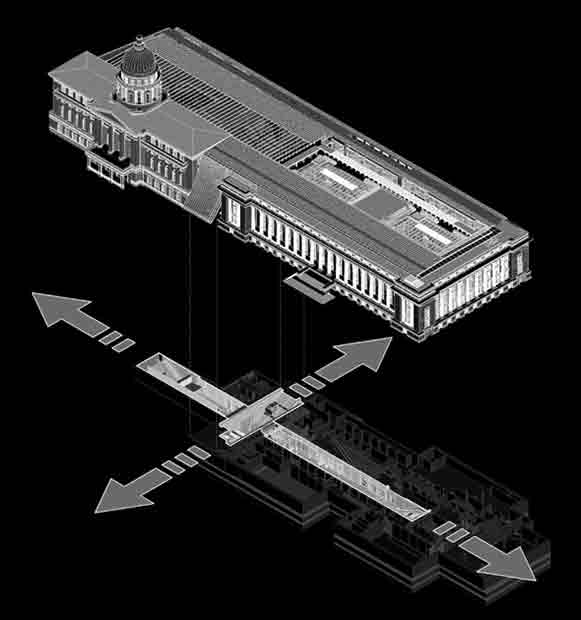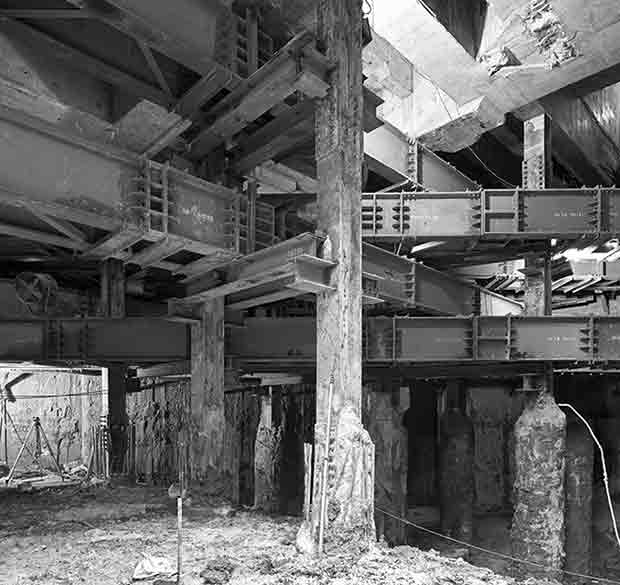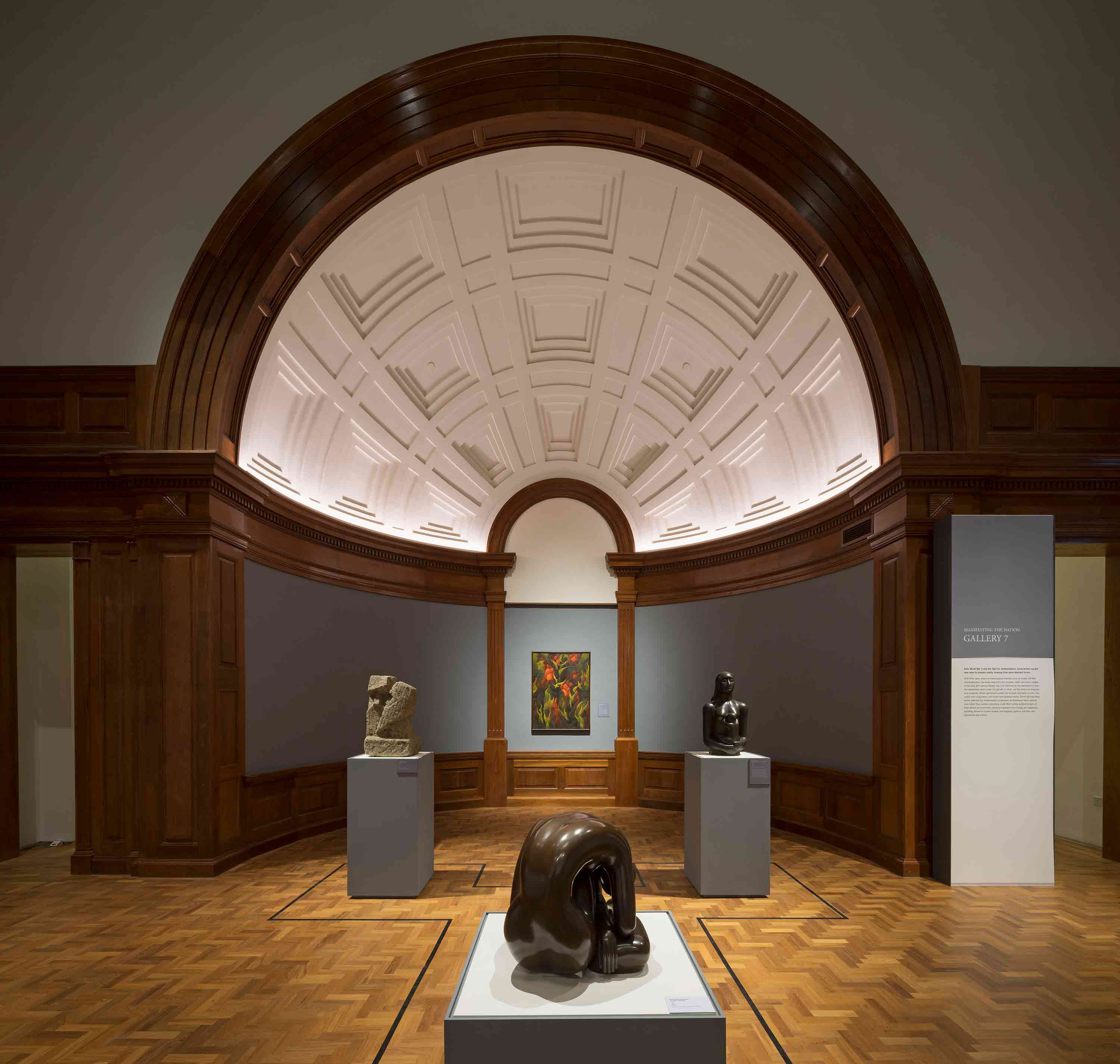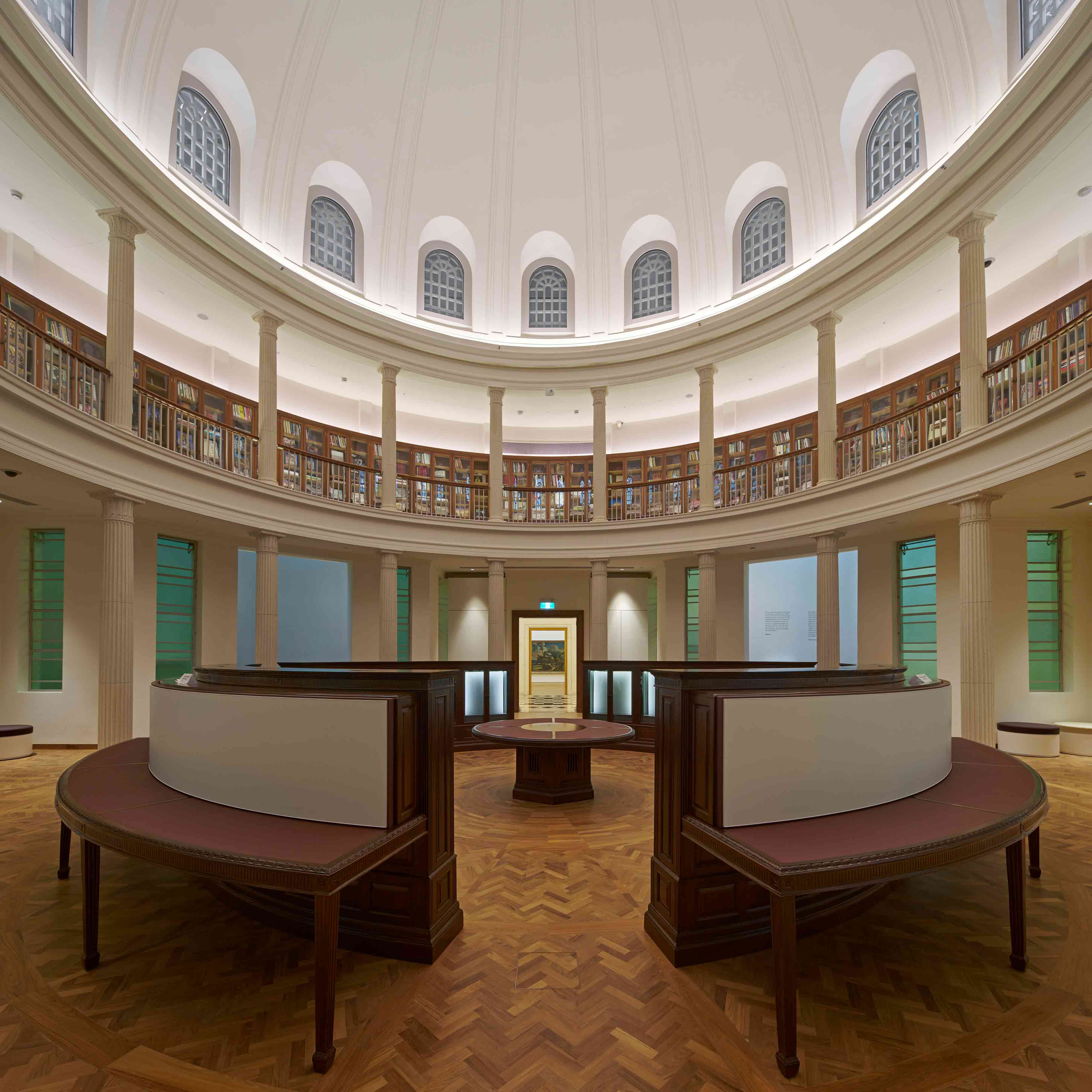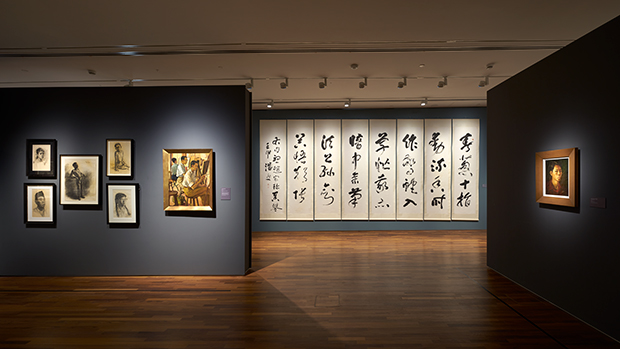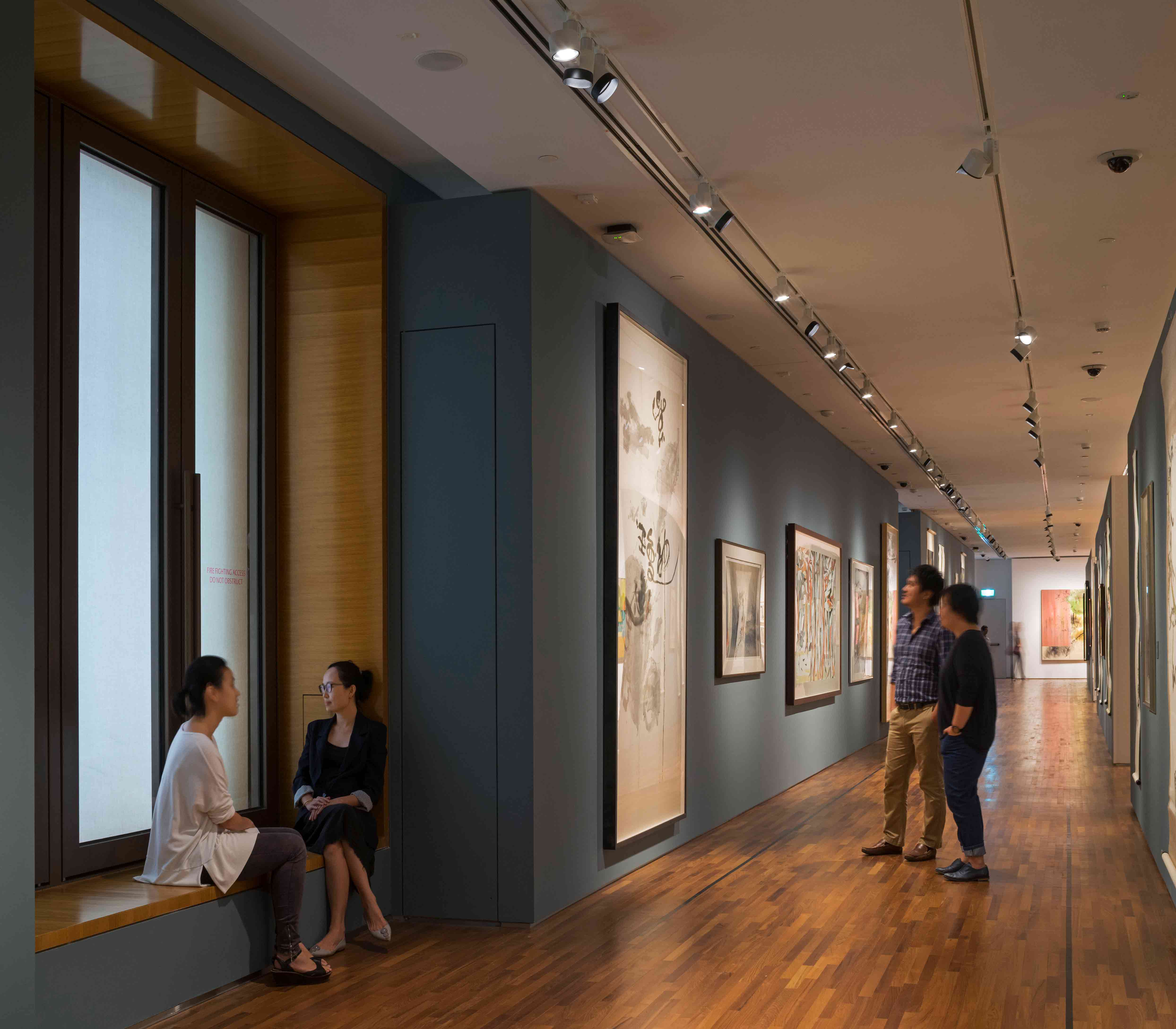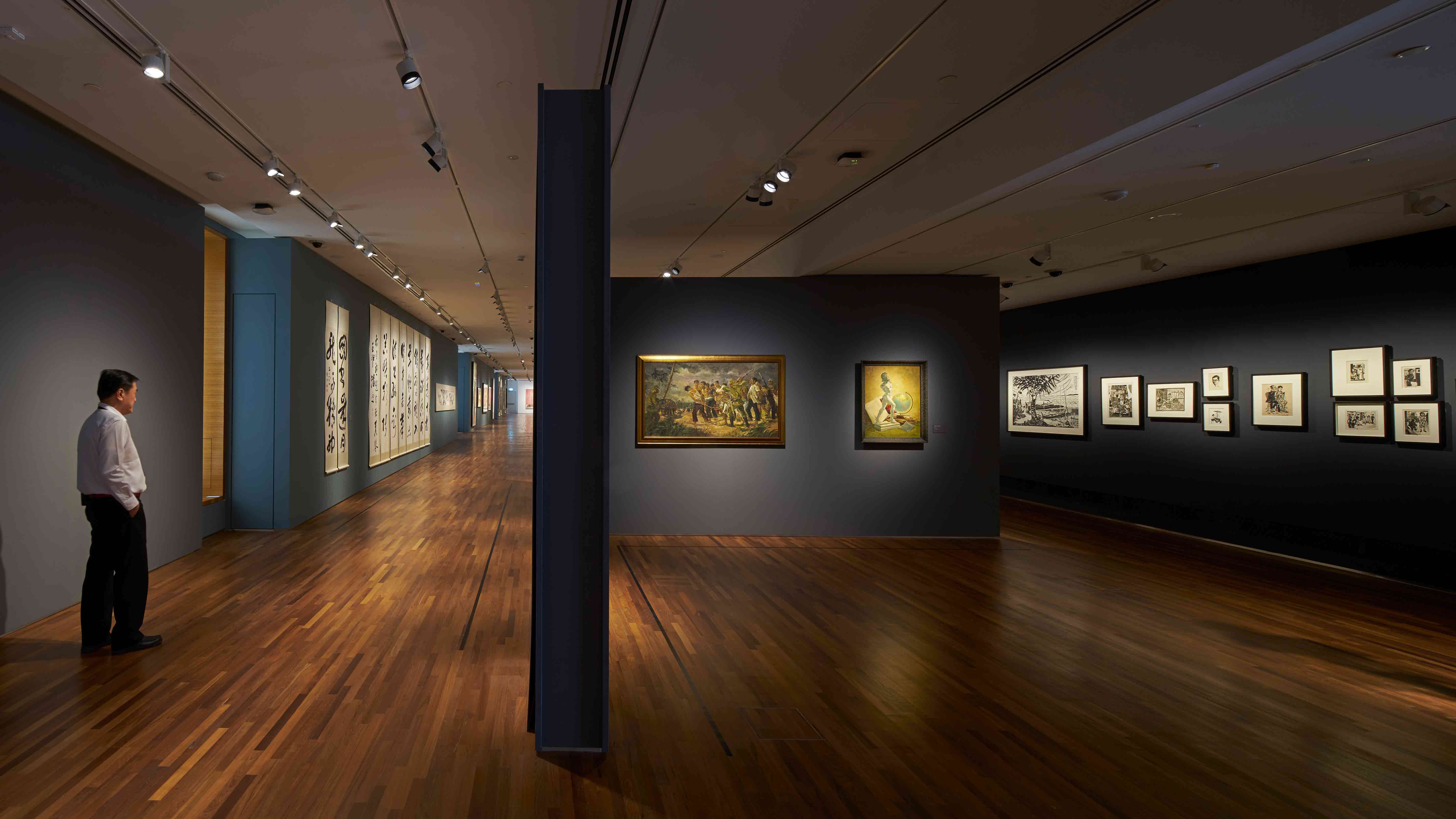
National Gallery Singapore, Singapore
The Architectural Heritage revealed beneath a Wave of Light
The project consists of a minimal architectural intervention that symbolically unifies the two historic buildings and transforms them as part of a spectacular architectural design.
A sweeping glass-and-steel roof structure, held up by tree-like supports, will be placed above the Supreme Court and City Hall buildings, linking them together. This light and airy roof structure will function as the public sign of the new National Art Gallery.
This feature of the project will mean that the two historic buildings are conserved intact, allowing them to bear witness to the history of Singapore.
The new roof and its supporting structure, stretching across and unifying the Supreme Court and City Hall buildings, will not interfere with the existing buildings. Its tree-like structures will be built in the existing empty spaces between the buildings, such as the courtyards and linking corridor.
The new National Art Gallery will be an institution that is unique in the world for the quality of its facilities and for its unique ensemble of temporary exhibition galleries, opening Singapore to leading forms of contemporary art and attracting visitors from across the world.
Offering numerous public activities in its roof-top area, a kind of spectacular promenade above the roof tops of the building, as well as in the new basement area opened up below the buildings, the new National Art Gallery will become a cultural destination of a new type for all residents of Singapore and for art lovers from across the world.
Supreme Court and City Hall
The project consists of a minimal architectural intervention that symbolically unifies the two historic buildings and transforms them as part of a spectacular architectural design.
A sweeping glass-and-steel roof structure, held up by tree-like supports, will be placed above the Supreme Court and City Hall buildings, linking them together.
This light and airy roof structure will function as the public sign of the new National Gallery Singapore.
Organization Principles
The Supreme Court building is constructed in the classic form of a “Palais de Justice”, and it has many features designed to receive a large public. However, owing to its former usage as a court, the building also has a system of access controls that separates the public from the judges and from the prisoners.
In converting the building for its re-use it is this system of controlled public access that will be removed, giving the former Supreme Court building the character of a palace that is open to the public to wander about in and one in which the spaces, opening out onto each other, form a quiet and a peaceful architectural landscape.
The main features of the architectural and functional design of the project are:
• A lower technical services and exhibit reception level;
• A lower public gallery giving access to all the activities of the National Art Gallery;
• Facades giving access to activities such as Children’s Museum, shops, café and restaurant;
• An exhibition level occupying the main floor of the National Art Gallery;
• Roof-top spaces open to activities and exhibitions, with spectacular views out over the city.
The project has been designed to give visitors a single itinerary that gives access to virtually all the exhibition areas without crossing back on itself, but allowing for developments according to changes in the presentation of the collection or programming of events.
In this basic circuit, the itinerary leads through all the exhibition areas in the building, exiting onto the roof-top spaces of the Supreme Court building.
It then goes across the high walkway above the entrance area, visits the sculpture garden, and redescends by the escalators to the exhibition level of the City Hall building, before finally rejoining the entrance area in the lower gallery.
Conservation work on Supreme Court and City Hall
The conservation work has rigorously balanced the objectives of maintaining the buildings’ original structures to the greatest degree, while accommodating the new functions of the Singapore National Gallery.
Consisting of thousands of decisions, small and large, the conservation work has been carried out with the greatest care at all stages of the project realization, as has the restoration work carried out by the Japanese company Takenaka under the supervision of studioMilou’s Singapore partner, CPG.
The need to ensure that the buildings met the stringent new construction regulations could have posed a threat to character and authenticity of these historic buildings when converting them into a contemporary Gallery; these regulations – acoustic and energy performance, fire safety, anti-terrorism and museum-standard conservation norms – each required interventions into the existing buildings.
studioMilou worked in close collaboration with CPG and the client in order for the new Gallery to fully meet the relevant energy, acoustic and security regulations while at the same time retaining its historic character.
As is the case in all major projects of this sort carried out in historic areas, there was a careful balance to be struck between conservation and adaptation needs, with decisions requiring thousands of hours of meticulous design work.
An underground gallery linking the two buildings
To further preserve the architecture of the two buildings, a public-circulation system was built beneath them in the shape of a large underground concourse. This has left the ground-floor level and public spaces free of ticketing, reception and circulation areas, freeing them for the gallery’s core activities.
This basement structure, hosting a public reception area as well as technical facilities, drew inspiration from those used in many major historic buildings adapted to house distinguished art institutions worldwide, among them the National Gallery in Washington, the Musée du Louvre in Paris, and the Prado in Madrid.
The National Gallery Singapore’s spectacular underground concourse extends longitudinally across the entire site and is, like the roof structure, one of the design’s signature elements. The concourse can be accessed by four monumental flights of stairs, each leading from one of the gallery’s facades, allowing access from every side of the institution.
In this way, the design also facilitates any future changes or new access needs and creates a closer relationship with the immediate surrounds. Behind the apparently simple basement design, and indeed the design as a whole, lies a far more complex technical reality, which presented tremendous challenges relating to the foundations of each monument.
While both were built at almost the same time and form a homogeneous ensemble in architectural terms, structurally they differ greatly.
A History, a Collection... A 21st Century Liberty...
The new National Art Gallery is intended not only to display the national collection of Singapore, but also to serve as a research institution on the art of South East Asia and as an institution that is open to the world as a whole.
In the symbolic landscape formed by the two buildings, the Supreme Court will symbolize the historical anchoring of the collection by housing the permanent exhibition, while the City Hall building will be used to send a message of openness, dynamism and modernity, through the presentation of its temporary exhibition.
The permanent exhibitions are arranged around the Library on the main floor of the former Supreme Court building. The display follows a chronological presentation, beginning with art from the 19th century and colonial period and ending with the ferment of late 20th century experiment.
The architectural work on the existing building will serve to encourage silence, attentiveness, and meditation, leaving the major role to be played by the works in the collection.
The visitor then plunges into the collection and experiences of the 21st century in the former City Hall building. The facilities available in the exhibition spaces will make this ensemble of exhibition rooms unique worldwide, and will make it ideal for the organization and regular scheduling of international temporary exhibitions.
An exhibition space under the dome of the former Supreme Court building will also be available for temporary exhibitions. This unusual exhibition space will allow for the installation of large-scale works of art, and could be used to house the works of artists specially commissioned by the National Gallery Singapore to occupy this truly exceptional space.
Chief Architect and Principal Consultant
studioMilou architecture, studioMilou singapore
Jean François Milou, principal architect and lead designer
Wenmin Ho, team manager and senior architectural associate
Nguyen Thanh Trung, senior architectural associate
Charmaine Boh, senior architectural associate
Janis Goh, senior architectural associate
Jiarong Goh, architectural associate
May Leong, architectural associate
Jason Tan, architectural associate
Eudora Tan, architectural associate
Jean-Loup Baldacci, architect – competition phase
Lise Macdonald, architecture/exhibition coordination
Karim Ladjili, architect – competition and schematic design phase
Cecile Strauss, architectural assistant – competition and schematic design phase
Delphine Miel, architectural assistant, interior design – schematic design phase
Yann Follain, architect – schematic design phase
Luther Seet, architect
Siow Zhi Xiang, architect
Pamela Choo O’Neill, senior architectural associate
Mikael Teh, architectural associate
Waihon Tham, architectural associate
Agueda de Urruela, competition phase coordination
Philip Burns, museum system specialist
Suzanne Ogge, museum and international projects specialist
David Tresilian, research and documents
Iola Lenzi, curatorial interface
Project Administration
CPG Consultants pte ltd (architecture group)
Lee Soo Khoong, executive vice president
Tan Hooi Ong, vice president
Technical consultants
CPG Consultants (civil and structural engineering), Leong Meng Sun, structure
ARC, Garth Sheldon, conservation
ICN Design, landscape
Lighting Planning Associates, Kaoru Mende, lighting
SMW, John Burris, AV/IT and acoustics
The Press Room, Kelley Cheng, signage and graphic design
Batiserf Ingénierie, initial structural studies
SECM, initial glass facade studies
INEX, initial M&E studies
CSTB, initial roof studies
Main Contractor
Takenaka Corporation – Singapore Piling and Civil Engineering Pte Ltd Joint Venture
Client
National Gallery, Singapore
Area: 60,000 m2
Construction Cost: 530,000,000 SGD
Completion Date: November 2015

